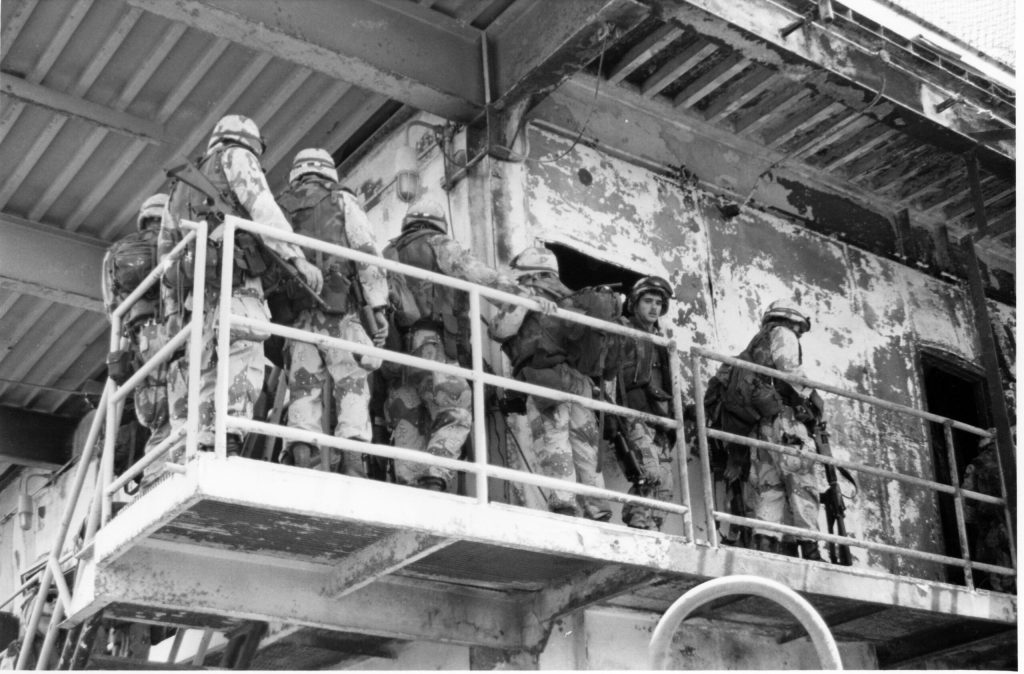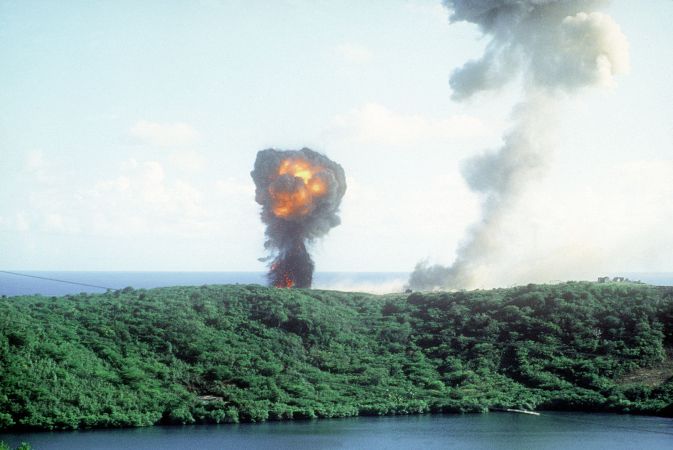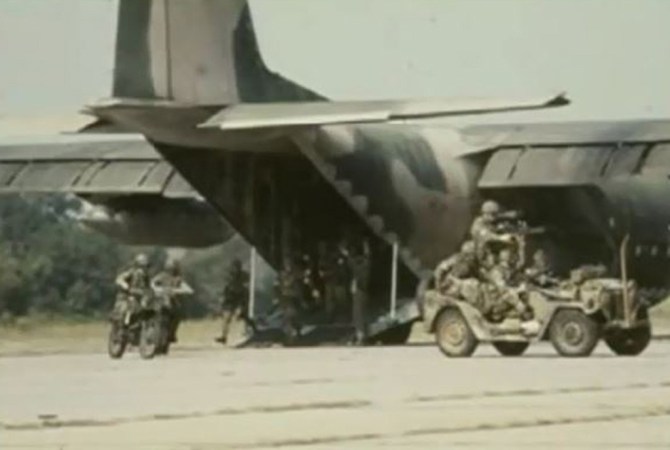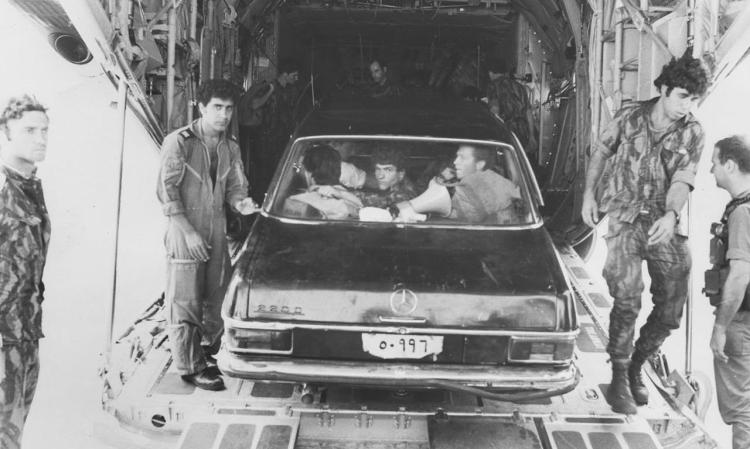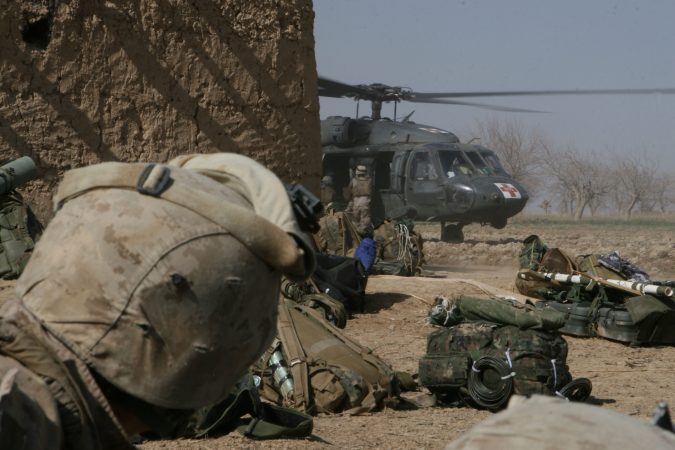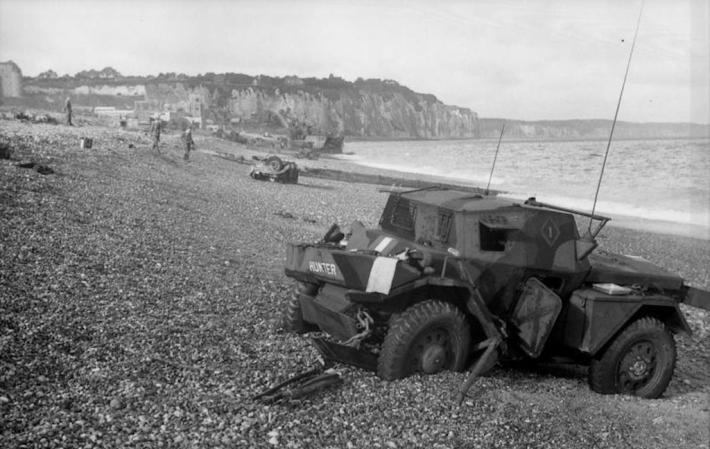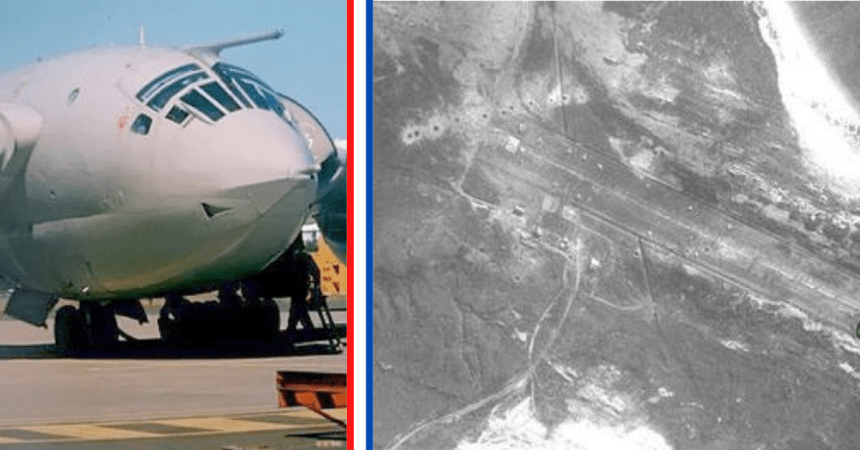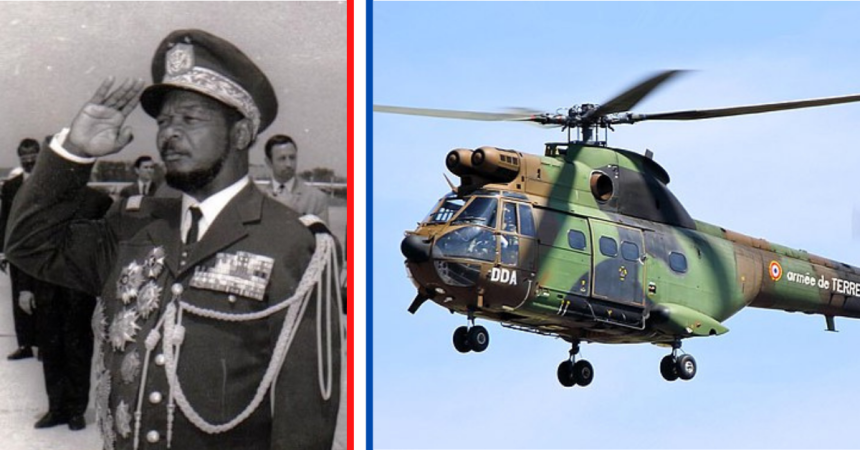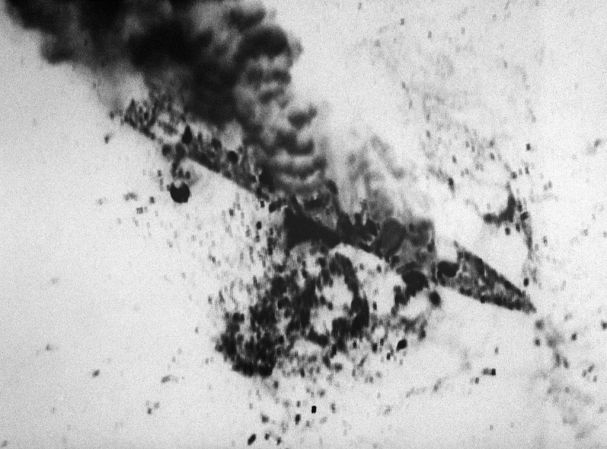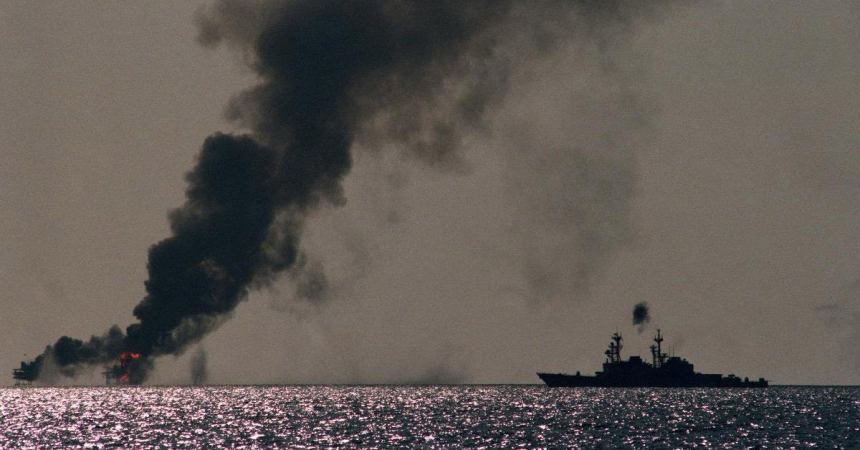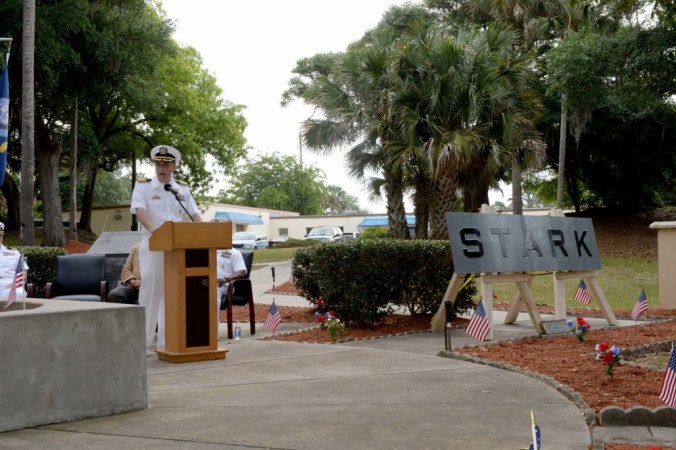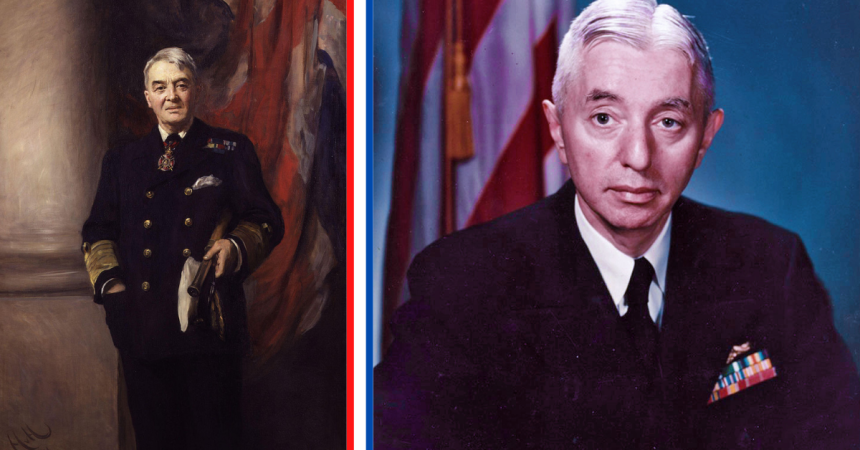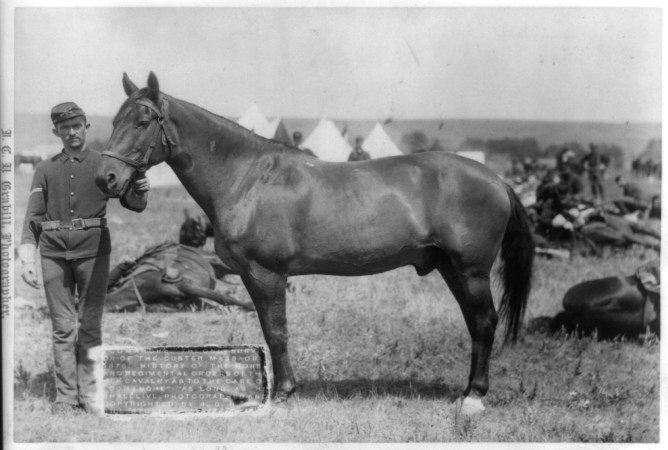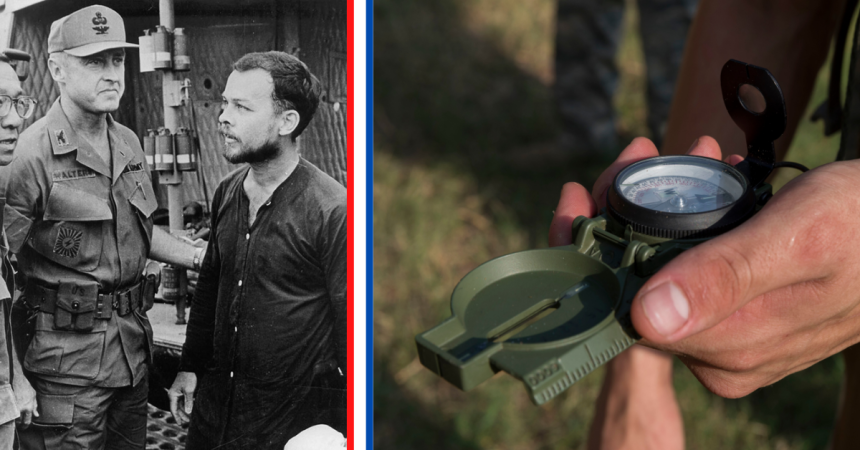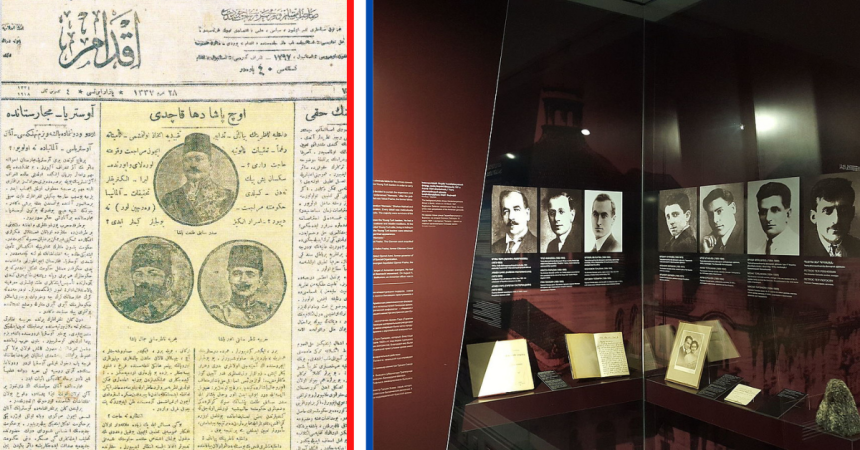Operation Praying Mantis was a defining moment in modern American military history, but it’s also nearly forgotten. It was the largest of five American surface engagements since WWII and it was the Navy’s first exchange of anti-ship missiles by ships.
It was a sunny morning on April 18, 1988, when the USS Samuel B. Roberts, a Navy frigate, was patrolling the Persian Gulf waters near the coast of Iran. Suddenly, the ship struck a mine while on patrol. This caused significant damage and ten sailors were injured. The explosion also nearly sunk the vessel.
The attack was attributed to Iran, who had laid mines in international waters to disrupt shipping in the region. Planning for retaliation began immediately. President Ronald Reagan decided this was a blatant act of aggression by Iran. He authorized strikes against Iranian naval and oil installations.
Reagan and his advisors decided on the op’s name because the mantis is a predatory insect that strikes quickly and with deadly precision – just as America intended to do.
Though brief, Operation Praying Mantis turned out to be the largest American naval action since World War II.
Here’s what happened.
Setting the Stage
Back in the late 80s, tensions between the United States and Iran were at an all-time high. The two nations had been involved in a long-standing cold conflict. Iran vocally supported extremist groups in the Middle East that were hostile to the US. In turn, America was maintaining its presence in the region. The Navy routinely escorted Kuwaiti oil tankers through the Persian Gulf. Iran decided those patrols weren’t peaceable and dubbed them a provocation.
The Mission
Operation Praying Mantis’ mission was simple. Destroy the Iranian Navy’s offensive capabilities and send a clear message. America wouldn’t tolerate Iranian aggression.
The USS Enterprise, the flagship of the Navy’s Sixth Fleet, led the operation, with the support of two surface action groups (SAG) and additional air support.
The first phase involved destroying the Iranian naval vessels that had been involved in the mining of the USS Samuel B. Roberts.
The second phase involved attacking Iranian oil platforms Sassan and Sirri. Both served as military staging areas and intel-gathering hotspots for the Iranians.
Related: Here are the difficulties the Navy is facing in decommissioning the USS Enterprise.
The Naval Battle
On April 18th, things got pretty heated in the Persian Gulf when the USS Merrill and USS Lynde McCormick approached the Sassan platform. The ships warned the Iranians to evacuate the platform, but the Iranians refused.
So the destroyers had no choice but to open fire and ultimately destroy the platform.
At the same time, another group of vessels, consisting of the USS Wainwright, USS Bagley, and USS Simpson, headed towards the Sirri platform. Here again, a warning was issued. However, the Iranians decided to respond with violence. They launched a shoulder-launched surface-to-air missile at the American ships.
It missed.
Then, the destroyers did what they came to do and demolished the Sirri platform.
As the operation continued, a Marine Corps AH-1 Cobra helicopter was launched from the USS Trenton to support the mission. The helicopter ended up engaging and destroying an Iranian speedboat that was armed with machine guns.
As the conflict wore on, the Iranian frigate Sahand decided to confront American forces. The Sahand launched a missile at the aircraft, which luckily missed. In response, the USS Joseph Strauss fired a Harpoon missile at the Sahand, ultimately crippling the vessel.
Later, A-6 Intruder aircraft from the USS Enterprise dropped laser-guided bombs on the frigate, ultimately sinking it.
The Iranian missile boat Joshan also tried to get in on the action by approaching the American vessels and firing a Harpoon missile. However, the USS Wainwright’s Standard Missile-2 was able to intercept the missile. The American response was swift – multiple missiles were fired at the Joshan, which was destroyed.
All in all, Operation Praying Mantis demonstrated the Navy’s incredible power and capabilities. It sent a clear message to Iran and the world. However, it wasn’t without consequences.
The Aftermath of Operation Praying Mantis
While America did emerge victorious in Operation Praying Mantis, two American lives were lost. The crew of a Marine Corps AH-1T Sea Cobra crashed near Abu Musa island, possibly while evading hostile fire.
The USS Samuel B. Roberts was repaired and returned to service.
On the other hand, the Iranian Navy suffered significant losses. Six vessels were either sunk or damaged and two oil platforms were destroyed.
The American attack helped pressure Iran to agree to a ceasefire with Iraq later that summer, briefly ending the eight-year conflict between the countries.
In November 2003, the International Court of Justice dismissed a claim by Iran and a subsequence American counterclaim. The Iranians claimed America breached the 1955 Treaty of Amity.
Operation Praying Mantis was a clear demonstration of the Navy’s capabilities and its willingness to defend American interests in the Middle East. The mission sent a strong message to Iran that the US would not tolerate its aggressive behavior and that it would respond with force if necessary.
While the events of Operation Praying Mantis took place over thirty years ago, the lessons learned from this mission are still relevant today. The Navy continues to operate in the Persian Gulf and other hostile environments around the world, and the need for readiness, teamwork, and a strong resolve to defend American interests remains as important as ever.
Related: An Iranian suicide drone wounded six Americans and killed one in Syria.


